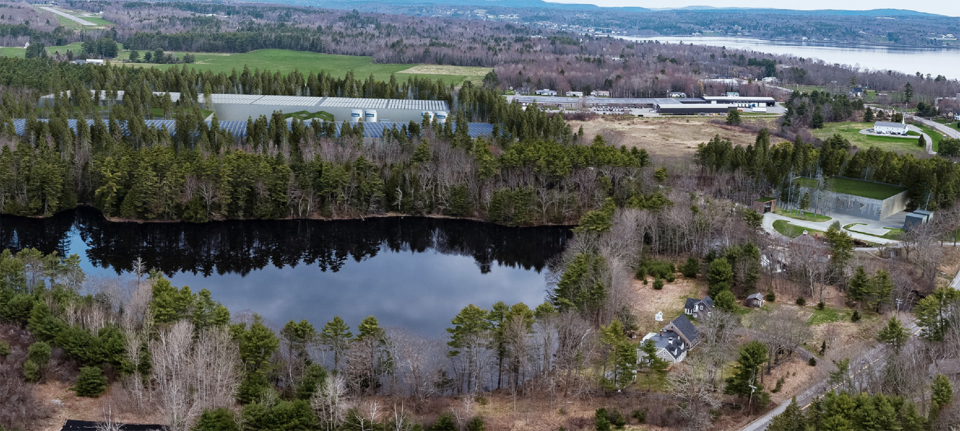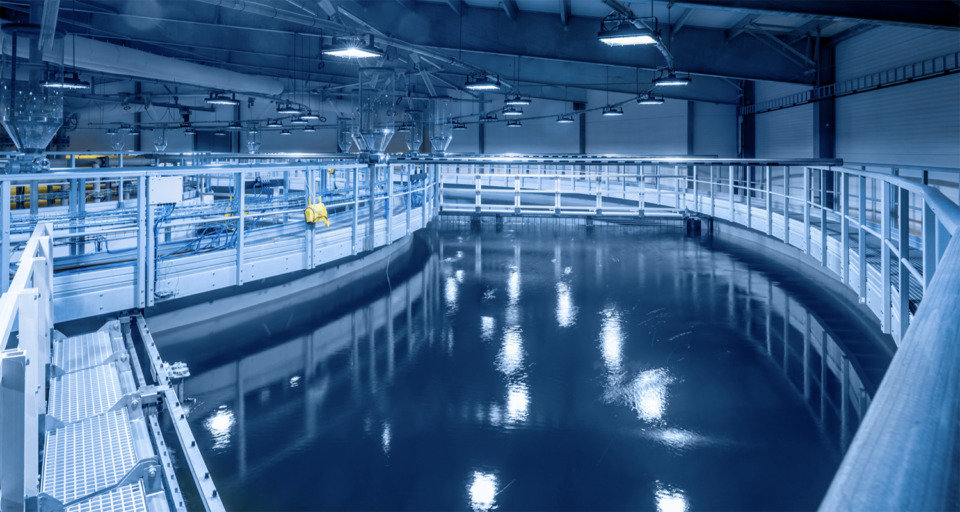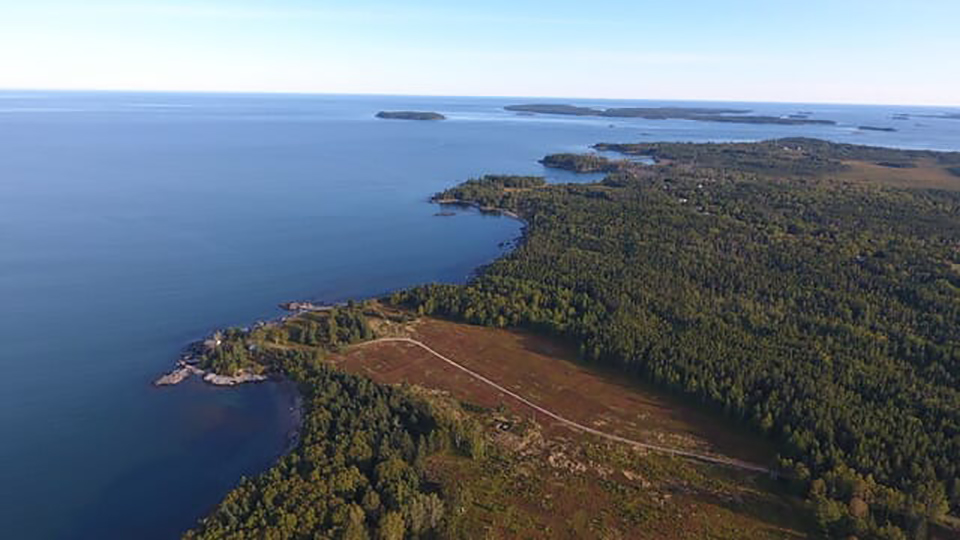Even without fish pens in public waters, social license remains crucial for U.S. recirculating aquaculture farms

Despite well-established economic and ecosystem-restoration benefits, aquaculture continues to meet pushback from nearby communities in the United States, particularly along the Long Island Sound and Massachusetts seashores. Even the actor James Spader, a seasonal Massachusetts resident, has showed up at town meetings to voice dissent over a proposed oyster farm.
Opponents typically don’t want aquaculture cages or nets infringing with either recreational or commercial uses of the water. It harkens back to NIMBYism (not in my backyard), as aquaculture critics often don’t have a problem with such farms existing, but they certainly don’t want to see them from their living room windows.
Recirculating aquaculture systems (RAS), in theory, solve this problem by taking the fish farms out of the open water and placing them entirely on land. They also address many of the concerns often associated with near-shore aquaculture: Using the latest technology, RAS facilities have a high degree of control over the farming process, which equals less (or no) fish disease, no fish escapes and waste materials often being filtered and converted for other purposes, like renewable energy.
Yet just the idea of “farmed fish” or a commercial-sized operation setting up in town is still enough to inspire opposition from the public in some cases. And even with extensive scientific surveys and support from local authorities, a lack of goodwill from the surrounding community can either slow the development process or scare off RAS companies entirely.
Maine, with its 500 miles of cold-water coastline, abundant access to clean fresh water and proximity to large North American consumer markets, is an obvious choice for RAS operations. Several major land-based fish farms are currently in development and have had to navigate public support, or lack thereof.

Local government’s role
Norway’s Nordic Aquafarms will soon start construction on a $500 million land-based salmon farm on 54 acres in the coastal town of Belfast, Maine. In phase one, the company plans to produce 14,000 metric tons of salmon annually before scaling up to closer to 30,000 tons.
“We searched all the way from the Canadian border down towards Washington D.C.,” Erik Heim, president of Nordic Aquafarms, told the Advocate. “We mapped water resources, contamination issues and appropriate property opportunities. We also considered access to market in terms of transport, and whether there was political support at the local and state level.”
In Belfast, all of those pieces came together, Heim notes, with ample support from town and state officials.
Yet a small but very vocal group of the Belfast community began pushing back, saying they didn’t want the salmon farm in their coastal town. “This is a group with a history of opposing projects, and it was clear they were against it on an ideological basis,” he says. “It wasn’t about any one issue – some may call this NIMBYism.”
We wanted to make sure that the local community does want us in their backyard. Beyond maintaining the water quality, we should be able to contribute quite positively to the local economic development as well.
This group of Belfast residents began voicing concerns about the proposed farm such as impacts of the residual discharge, emissions from backup generators, fish escapes and over-pumping of groundwater. “Basically there was a lot of effort to try to discredit the scientific basis for our permit applications,” he said, “but we’ve been through a very rigorous process with the authorities.”
As with any well-designed RAS facility, Nordic’s Belfast operation will be escape-proof, protect receiving waters and properly handle discharge.
“We micro-filter the discharge, which removes possible pathogens and 99 percent of most nutrients, and we are partnering with a biogas company to convert the resulting sludge into a renewable energy source,” said Heim. Filtered and treated discharge water will go far offshore via a pipeline to enable good mixing and effective dilution immediately.
“In any location, if you get some sort of opposition, the authorities will always be more thorough,” he said, “because in the end, they will be defending themselves in the appeals process.” Heim says the permitting process in Belfast has been slowed down as a result but, this delay has also allowed them to develop a lot more detail in the project, which will be modeled after the company’s existing structures in Norway.
A year and half before Nordic even submitted its permit applications, company officials began hosting public information meetings to address community concerns. “We also have an open-door policy where people can walk off the street and ask questions,” he said. “We’re happy to go to their homes and sit down and talk through concerns. I’ve been in many homes in Belfast.”
So far, Nordic hasn’t encountered similar community pushback in California, where it’s developing another RAS salmon farm, or in Europe, where the farms are already operational.
“I think the difference in Maine is that even though we have support from local officials, they haven’t been very public or vocal about the importance of a project like this,” Heim said, in reference to the sustainability gains, supply chain efficiency and local jobs boost. “We’re here to be a long-term responsible community member.

Putting the puzzle together
Gauging community support was a major factor when a Netherlands-based company narrowed down possible sites for its yellowtail RAS operation in the U.S
“Once we narrowed down to the shortlist, we started meeting the local communities,” said Ohad Maiman, CEO of The Kingfish Company. “Once we zeroed in on Jonesport in Maine, we met community leaders and had formal town halls before we announced the final selection. The final piece of the puzzle for us was to make sure we felt that we were choosing a community that wants us there as much as we want to be there.”
(Editor’s Note: Both Erik Heim and Ohad Maiman will join a panel discussion about land-based aquaculture, moderated by Advocate Editor James Wright, on Day 3 of GOAL, Oct. 8.)
Current permits include plans to harvest 6,000 to 8,000 pounds of yellowtail kingfish annually on the 90-acre site that includes 36-foot diameter tanks. The $110 million operation will use the same advanced technology as in Kingfish’s facility in the Netherlands, which operates in a nature reserve under the strictest guidelines.
“The system we’ve developed puts as much emphasis on removing solids and cleaning the water before we discharge as it does on keeping optimal conditions inside,” said Maiman, noting that the farm intakes and discharges into the same water source. For the Jonesport site, Kingfish is mulling whether it will filter solid waste for use as fertilizer, feedstock, or to be converted into biogas.
Maiman added that the company tried to put itself in the shoes of local stakeholders – meeting with Jonesport’s lobstermen, for example – to hear their concerns about how the operations could disrupt how they enjoy and fish the sea. They learned quite a bit that ended up altering their plans.
“We thought intuitively that we should make the discharge pipe as long as possible,” he said. “But we heard that actually they would prefer that we keep the pipeline as short as possible so it does not infringe on dredging for scallops.”
As a result, they added filtration to the pipeline so it could be shorter. As yellowtail are a warmwater species, the company also introduced a plan to extract the heat from the discharge after locals were concerned that the water released could warm the ocean temps off coastal Maine. “It’s a bit more investment upfront, but it makes sense long term and mitigates concern,” Maiman concluded.
The advantages of RAS operations address almost all of the environmental impact concerns of net-based farming, but it seems the public is most welcoming when convinced of the economic opportunity. The Kingfish Company, for example, vowed 70 fulltime jobs for Jonesport locals and started partnering with local universities and high schools to develop an aquaculture curriculum and training program.
“We wanted to make sure that the local community does want us in their backyard,” Maiman said. “Beyond maintaining the water quality, we should be able to contribute quite positively to the local economic development as well.”
Follow the Advocate on Twitter @GAA_Advocate
Now that you've finished reading the article ...
… we hope you’ll consider supporting our mission to document the evolution of the global aquaculture industry and share our vast network of contributors’ expansive knowledge every week.
By becoming a Global Seafood Alliance member, you’re ensuring that all of the pre-competitive work we do through member benefits, resources and events can continue. Individual membership costs just $50 a year. GSA individual and corporate members receive complimentary access to a series of GOAL virtual events beginning in April. Join now.
Not a GSA member? Join us.
Author
-

Amanda McCorquodale
New York-based freelance writer Amanda McCorquodale covers emerging trends in the food industry.
Tagged With
Related Posts

Innovation & Investment
Is RAS the game-changer that Europe’s aquaculture sector needs?
The impact that recirculating aquaculture systems, or RAS, will have on European production remains to be seen, but the general vibe is positive.

Intelligence
Aquaculture has put the oysters back in Oyster Town
Whitstable Oyster Fishery Co. aims to safeguard the English town’s rich oyster tradition. Farming triploid oysters on racks in intertidal zones has made a "massive difference," says the company's managing director.

Intelligence
In a land of lakes, a rally cry for recirculating aquaculture
Wisconsin State Rep. Mary Felzkowski and others are championing aquaculture to grow food production in the state, with a keen interest in recirculating aquaculture systems (RAS).

Intelligence
RAS in the USA: Fad or future?
A rash of large-scale, land-based recirculating aquaculture systems (RAS) are planting their flags on U.S. soil, even though it will take several years and hundreds of millions of dollars of investment before they produce their first sellable fish.

